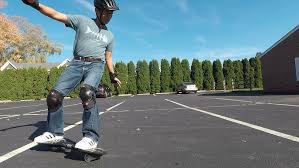How to Ride a RipStik: A Beginner’s Guide to Mastering the Caster Board
Meta Description:
Learn how to ride a RipStik with this beginner-friendly, step-by-step guide. Discover tips, tricks, and safety advice to help you master the caster board with ease.
What is a RipStik?
A RipStik is a two-wheeled caster board that blends elements of snowboarding and skateboarding. It has a twisting motion that propels you forward without needing to push off the ground, making it a fun and unique way to ride.
Why Take a RipStik Course?
Excellent for coordination and balance
provides an enjoyable full-body workout.
Ideal for snowboarders, skaters, and surfers
An entertaining substitute for scooters and skateboards
Things You’ll Need
Get the following before you begin riding:
A RipStik (RipStik G or classic)
The helmet
Wrist guards, elbow pads, and knee pads
smooth, level surface (skate park, driveway, or deserted street)
How to Ride a RipStik: A Comprehensive How-To
1. Begin in an open, level area.
Select a place where you may practice safely and unhindered
2. Put on protective clothing
To avoid getting hurt while learning, put on a helmet and padding.
3. Understand the RipStik’s Design
The RipStik has two decks (front and back) connected by a torsion bar. Each deck has a caster wheel that can rotate 360 degrees.
4. Mount the RipStik
-
Place your front foot (dominant foot) on the front deck.
-
Use your back foot to push off slightly.
-
As the board moves, place your back foot on the rear deck.
Tip: Use a wall, rail, or a friend for support when mounting for the first time.
5. Start Wiggling to Move Forward
-
Shift your weight back and forth from the front foot to the back foot.
-
Twist your hips in an “S” motion to generate movement.
-
The key is to keep moving—that’s how the RipStik stays balanced.
6. Steer the RipStik
-
Lean left or right to turn.
-
Press down slightly on the front deck in the direction you want to go.
7. Practice Balancing and Carving
-
Try riding in a straight line, then make wide turns.
-
Practice slowing down and stopping by hopping off or riding onto grass.
Common Beginner Mistakes (and How to Avoid Them)
-
Stiff posture: Stay loose and relaxed.
-
Looking down: Keep your eyes ahead to maintain balance.
-
Starting on slopes: Begin on flat ground to avoid accidents.
-
Trying tricks too soon: Master the basics before attempting tricks or steep turns.
Tips to Get Better, Faster
-
Practice for 15–30 minutes daily.
-
Watch tutorials on YouTube for visual guidance.
-
Ride with friends to make it more fun and motivating.
-
Gradually try small inclines as your balance improves.
